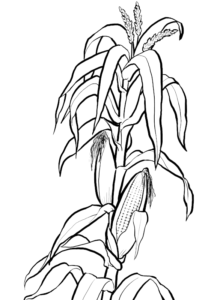Neglect in corn production


Corn is the second most important staple agricultural commodity produced and consumed in the country next to rice. This is not only consumed by the people, but also serves as an important raw material in the production of animal feeds and other food products. Despite this, the reactionary state is systematically neglecting corn production. Over the past years, the local production of corn has been decreasing while the country is becoming increasingly dependent on imports. Farmers face bankruptcy due to underpricing. Instead of supporting corn production, the government is pushing for all-out liberalization of importation.
Under the Duterte regime, corn farmgate prices remained low, while retail prices in local markets soared annually. From 2016 to 2020, the retail price of white corn increased by 32% from ₱22.77 to ₱30.15. On the other hand, farmgate prices dropped by ₱0.27 from ₱12.30 to ₱12.03. Yellow corn prices also increased by 13% from ₱20.36 to ₱22.97, while the average farmgate price increased by a mere 2% from ₱11.78 to ₱12.
White corn is usually milled and consumed as substitute for rice, or processed as cornstarch, corn chips and binatog (a corn snack). Yellow corn, on the other hand, is a vital material in feeds for hogs, chicken and fish, and is also used to manufacture corn chips. On average, every Filipino consumes 15 kilos of white corn per year. The consumption per capita is higher in the regions of Zamboanga Peninsula (159 kilo), Northern Mindanao (45 kilo), Davao (41 kilo), and Central Visayas (37 kilo) where corn is more commonly consumed instead of rice.
Around 500,000 farmers depend primarily on corn production. In 2020, a total of more than 8.1 million metric tons (MT) of corn was produced by the country. Of this volume, around 60% were processed as feeds. Nearly 2.5 million hectares of farmlands are planted with corn across the country. The biggest of these are located in the provinces of Isabela (1.1 million MT) and Bukidnon (0.8 million MT). Cornfields are typically small-scale and non-contiguous with an average area of only 1.3 hectares.
Although non-contiguous, yellow corn production is dominated and controlled by only four big local companies which manufacture animal feeds: B-MEG of San Miguel Foods Incorporated owned by capitalist Ramon Ang, Univet Nutrition and Animal Healthcare Company of the Campos family, Pilmico Foods Corporation of the Aboitiz family, and Universal Robina Corporation of the Gokongwei family. These companies usually have processing plants in areas with a huge concentration of cornfields. These include the provinces of Isabela, Bukidnon and South Cotabato where 45% of the total volume of local yellow corn is produced. These companies control farmgate prices and impose requisites in buying corn including resiko (moisture content). The Biggest of these companies is B-MEG which controls 25% of the animal feed market in the country.
Under Duterte, the volume of corn imports slightly increased, primarily those from the ASEAN and US. From 2016, the share of imports in the total supply of corn in the local market increased by 10% to 12% in 2018. The largest volumes were imported from Indonesia (25%), Thailand (23%) and the US (21%). On average, the country imports around 580,000 MT of yellow corn per year.
Foreign control of the local corn industry is set to tigher with the attempt of the American Chamber of Commerce of the Philippines and European Chamber of Commerce of the Philippines to push for the enactment of the Rice and Corn Industry Liberalization Act. This is being pushed in Senate by its Committee on Agriculture and Food chairperson Sen. Cynthia Villar. The bill seeks to allow foreign companies 100% foreign ownership of corn processing companies in the Philippines. Villar also authored the Rice Liberalization Law which resulted in the influx of imported rice in the local market and bankrupted local rice farmers.
Corn farmers are facing threats of bankruptcy with the continuing spread of the African Swine Fever. A report by the Global Agricultural Information Network indicated that the total production of corn in the country will drop by 2.4% to 8 million MT this year due to the spread of the virus, primarily in Luzon, which continues to result in lower consumption and demand for hog feeds.














